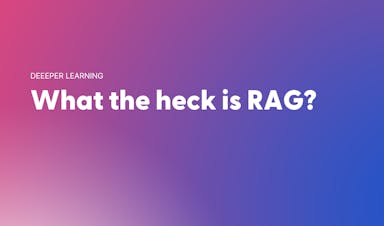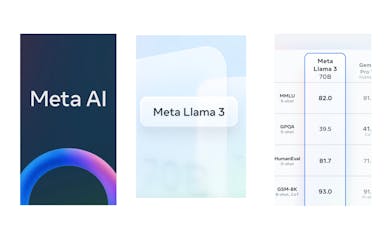In Defense of Hard Pivots: From Hiring Platform to Esports Startup

Why we decided to do a hard pivot and the steps we took to make it happen.
In 2017, I started a tech screening and hiring business called Headlight with my friend and former Etsy teammate Wayne Gerard. A few days ago, we announced that Headlight had been acquired by Woven, a developer hiring platform.
We made the decision to sell for two reasons:
1) We loved their model and truly believed that our customers, and the tech industry at large could benefit from Woven’s rigorous but candidate-friendly approach, and because
2) A few months ago, we started working on a hard pivot into esports / gaming analytics and this sale allows us to fully commit to it.
What is a hard pivot?
In basketball, a pivot when you keep one foot on the ground while moving the other. In startups, it’s when your product stays the same, but you change who you sell to or vice versa (same market, new product). One thing changes, one thing stays the same.
A hard pivot is when neither your product nor your market stays the same, which leaves only the team. In basketball, this is would be called traveling (or for James Harden, a double step back).
Fred Wilson of Union Square Ventures wrote a whole post about how founders should not do hard pivots and just let the old business die and start anew. While we have enormous respect for Fred and USV, clearly we didn’t take that direction.
Most hard pivots are told in retrospect and in an abbreviated fashion:
- Slack and Discord both started as games before hard pivoting into massive group chat platforms.
- The group dinner series Grubmwithus hard pivoted into a massive sneaker ecommerce platform.
- Double Labs, went through multiple hard pivots, from video ad tech to on-demand laundry service to disappearing text messages before their Android lock screen launcher got millions of users and lead to their Microsoft acquisition.
Rarely do you hear about the hard pivot from inside, while it’s happening. This isn’t a post about how we pivoted now have a massively successful company.
This is a post about why we decided to do a hard pivot and the steps we took to make it happen.

1. Remember why you got into business
Wayne and I were both interested in improving the hiring process, having interviewed dozens of people at Etsy and for previous companies as well as our own experiences as candidates.
We began working on Headlight in the summer of 2017, talking to hiring managers, recruiters, and job candidates, running a survey of tech hiring practices, and eventually building out a prototype. We went full-time in December after landing our first customer and published a blog post a few months later about our aims:
We believe that the best way to understand someone’s fit for a role is to study how they respond to scenarios related to the job. This is not a new concept — athletes try out for teams and teachers do mock lessons when interviewing for a new school — and yet in the workplace, many companies have done little to capitalize on this wisdom.
Through Headlight, we hope to build a world that makes landing your next career opportunity a fascinating, rewarding, and equitable experience. A world where employers can more easily spot those diamonds in the rough, and where talented people are given an opportunity to truly shine.
We started Headlight because we thought it could be a large and profitable business. But also because we started it because wanted to make hiring a more empirically-driven and performance-oriented process (we’ll come back to this).

2. Know when it’s not working
We were told that HR and Recruiting were tough markets to break into, and we knew that smart people like Patrick McKenzie and Thomas Ptacek had tried unsuccessfully to build developer screening platforms. Still, we believed we had an insight into the market and we went after it.
We started with a software platform that allowed employers to assign timed take-home assignments. When our customers asked for help with coming up with good assignments, we built out a library of them, with a rubric for grading candidate submissions holistically.
When our customers asked for help finding candidates, we started running tournaments, putting up great prizes to encourage tech talent to take our challenge. We graded all the submissions anonymously and helped the winners discover new job opportunities.
When our customers wanted help grading the assignments, we developed a pool of technical assessors trained to review candidate submissions and provide calibrated assessments of their work.
We charged for our product early on, landed customers, and made money, taking home close to six figures in revenue in our first full year of operation, but the revenue was inconsistent and unpredictable.
Our goal had always been to identify a repeatable and scalable business model with a target customer that wanted to buy what we were offering. Throughout the experimentation period, we were looking for that model, but every time we thought we had it, we were wrong. We had good top of funnel leads, but conversion to sales conversation and then closing deals was low. We had trouble understanding why our customers would or wouldn’t buy.
We tried to follow the market but we could also feel that something wasn’t right.
3. Run a process
A few months into going full-time on Headlight, we raised a pre-seed round (<$1M in capital). By the fall of 2018, we could see that we had about 4 months before we would need to start fundraising for a seed round, and we didn’t feel we had the momentum to do so.
Venture financing gets a lot of hate these days, but one of the things it does give you is a sense of urgency and clarity. We knew we would have to really change our trajectory and/or become cash-flow positive if we were going to stay alive. It took me 5 years after folding my last business, Ridejoy, to starting my next, and I was definitely not going out without a fight.
One of the things I’m really grateful for is that Wayne and I aren’t just great professional collaborators, we also have a really strong and emotionally open relationship (as all founders should, but many don’t). I had been feeling anxious about our company’s future for a while and on a Friday in November, talked to Wayne about it. He said to me:
“If you’re thinking about doing a Hail Mary, now would be the time.”
We talked it over and decided to spend the next week thinking hard about our next move. Our animating question was simple: what approach would give us the best shot of building a venture-scale business? Failure is the expected outcome of any startup, but we were determined to increase our chances of success.
We still had plenty of ideas of what we could do in recruiting (become a tech-powered agency, offer coaching to job candidates, etc) but we also wanted to look at completely new ideas as well.
Over that week, we each looked at markets, trends, and ideas both inside and outside of recruiting, and put together a presentation with a name for the idea, a brief explanation, and the pro’s and con’s. We then walked the presentation through about 5 trusted friends who were all founders themselves, who weighed it and helped us make a decision.
Running a process helped us put structure to a very ambiguous situation and gave us a deadline to work towards. I would highly recommend it to anyone consider a hard pivot.
4. Validate and recommit
The feedback from our founder friends was clear: all our recruiting ideas fell flat, but esports and gaming looked promising. Many of the concerns about our hiring ideas weren’t that the ideas themselves were good or not good, but that they weren’t likely to produce a venture return. Again, we accepted that bar for ourselves when we took venture money.
Esports and gaming on the other hand was a large and still growing opportunity that seemed to not have gotten overhyped yet. Of course there were people who knew about the massive growth of esports, but we encountered many, including folks in tech, whose jaws would drop at the idea of millions of people watching others play video games. For us, that was a good sign and meant there was still room to grow.
That said, we still needed to develop a product that solved a real problem in this market. We identified some ideas but they were just that, ideas without much validation.We started talking to as many esports teams and competitive gamers as we could (over 50 in the first month) and asked various versions of the question “what are your biggest problems?” and listened carefully.
We came up with a couple problems: finding teams at the same level who were free to scrimmage, no place to private store stats and discuss strategy, and difficulties with team communication. We built landing pages for each of our products and started showing them and driving paid traffic to the landing pages.
What we heard over and over again was that comms analytics tool was the most interesting, unique, and exciting. We had pro team analysts tell us how this would be super valuable if done well and that they had never seen anything like this. Now, you always have to be careful when you hear enthusiastic feedback like this because talk is cheap, but it felt much more promising than most of the feedback we had ever gotten about Headlight.
One made us feel even better was that there was a proven use case for communication analytics in a different market: sales. Conversation intelligence platforms for sales like Gong.io and Chorus.ai have been around for the last 4–5 years, transcribing sales calls and deriving valuable insights from that communication. We could do the same for esports teams, who have 5 or 6 players talking at an insanely rapid clip throughout a 30–45 minute match.
With this research in hand, we were able to go to our existing investors and tell them about the hard pivot. This wasn’t the easiest task, and they had some questions initially, but as we walked them through our thinking and research, they got onboard. Many told us they had backed us, not the idea, and were ready to help us with our pivot.
Beyond getting the support of our investors, we also had to recognize that we were resetting the clock on our company with the hard pivot. Were we prepared to spend another 5–7 years working on this business?
As lifelong gamers (I had my first LAN party in middle school and Wayne was a Diamond ranked Starcraft II player) who are deeply passionate about team performance (I was an NCAA team champion and Wayne has built analytics tools for MLB teams) we felt we had the DNA and endurance to pursue this new business, allowing us to recommit fully.
5. Sunset or sell the existing business
So we had identified a new market, researched the opportunity, and validated a problem area we believed we could solve. Our investors were aware and onboard for the pivot. The next step would be to stop working on Headlight, which still had customers requiring our attention and support.
We could have just sent a “Thanks for your business but we’re completely changing directions” email and been done with it, but that felt wrong. We had built a community and had a lot of supporters for Headlight, and we wanted to give our customers a home and not say goodbye so abruptly.
Right around the time we were considering the pivot, we came across Woven. They were the first company after more than a year of working on the business that truly seemed to think about the industry in the same way we did — their emphasis on respecting candidates throughout the application/interview process and on creating a fair screening process that helped build diverse teams by reducing bias.
I had connected with their CEO over a call and got good vibes: they were a smart, thoughtful team that wanted to do the right thing.
All three co-founders had previously been all engineering managers who had personally interviewed hundreds of candidates. Both Wayne and I are second time entrepreneurs — we’ve had to hire and fire people — but in most of the corporate jobs we’ve held, we were individual contributors and neither of us have worked as recruiters. Lacking this crucial piece, perhaps we didn’t have the insights, relationships, or credibility to sell effectively. Maybe we were missing that magic “founder-market-fit”.
But Woven did. And they seemed like good people. So I reconnected with the CEO with an offer — would Woven want to acquire Headlight?
They were interested and after a number of conversations and legal back and forth, we came up with an agreement that worked for both of us. Remember what I said at the beginning: know why you got into business.
By selling Headlight to Woven, we would give our customers a new home, continue to advance our goals of making the job search a fascinating, rewarding and equitable experience, while giving us resources to be 100% committed to Midgame. Which brings us to today.
What Now?
Now you’ve heard the story our hard pivot as it happened, and we hope it gives other founders a more in-depth understanding of how these can go.
Startups are tough already, and hard pivots are trickier still. Things could have fallen apart many times along the way for us and they still might. We’re very excited to have more than 50 teams in our private beta using Midgame and giving us feedback on a daily basis, and we have a vision for our product that goes far beyond what we’ve built so far.
And we’ve got a very long road ahead.
Comments
Doris D. Schrader@dorisschrader
This showcases the strategic agility crucial for startups. It's inspiring to see how businesses adapt to market demands. However, while exploring entrepreneurial shifts, it's vital to consider long-term sustainability. For instance, understanding the gaming industry's dynamics could lead to unexpected opportunities. see this for more details about 10 Best Alberta Online Casinos and for insights into navigating such ventures.
Share
More stories

Sarah Wright · News · 5 min read
Q&A: Why is Perplexity such a big deal?

Aaron O'Leary · News · 4 min read
Q&A: What the heck is RAG?

Sarah Wright · News · 3 min read
Q&A: What makes AI models hallucinate?

Kyle Corbitt · News · 4 min read
What we've learned in 3 days of Llama 3

Aaron O'Leary · Announcements · 2 min read
Introducing Shoutouts

Finn Lobsien · Opinions · 5 min read
Can Devin AI Replace Product Managers?

